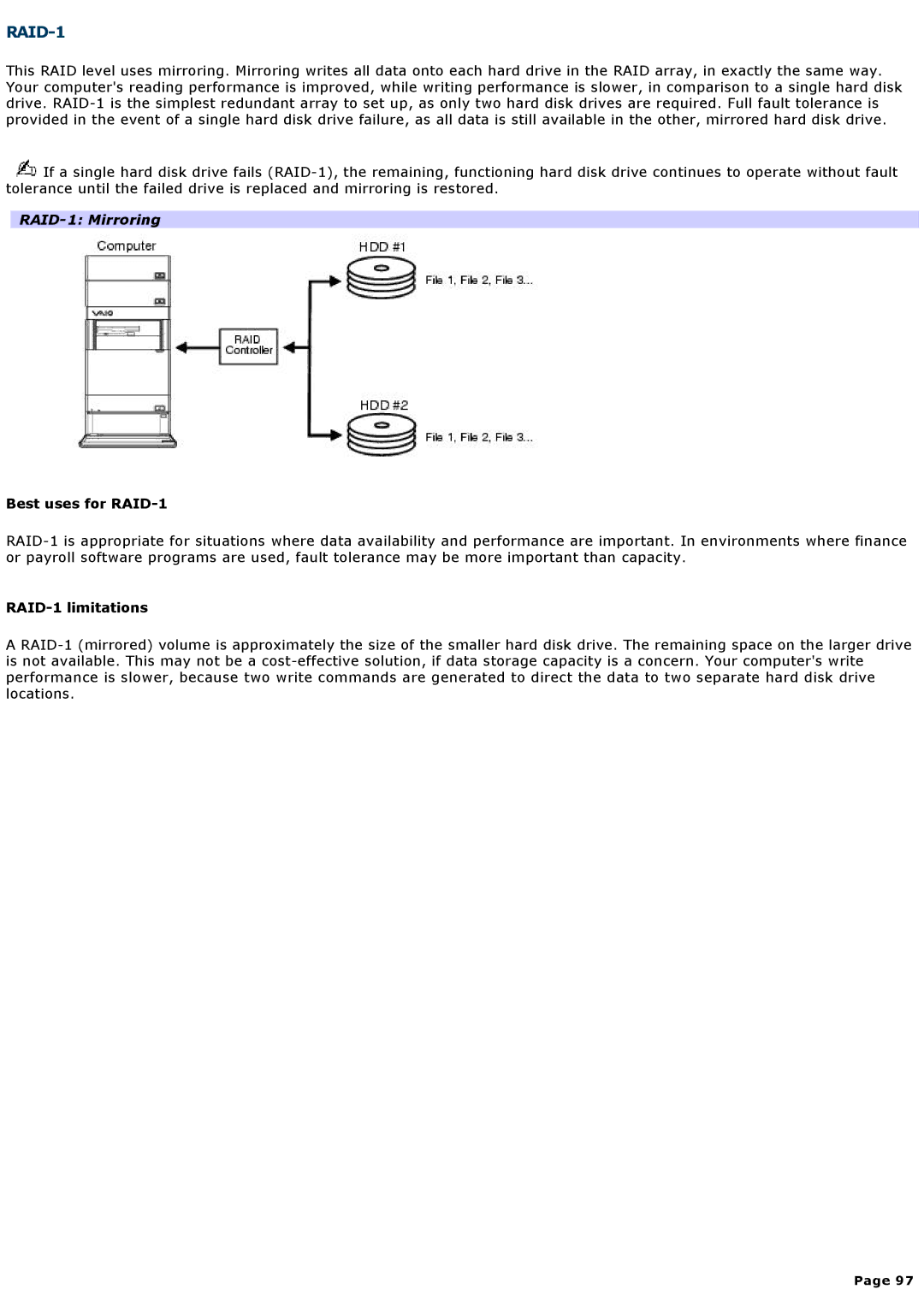
RAID-1
This RAID level uses mirroring. Mirroring writes all data onto each hard drive in the RAID array, in exactly the same way. Your computer's reading performance is improved, while writing performance is slower, in comparison to a single hard disk drive.
![]() If a single hard disk drive fails
If a single hard disk drive fails
RAID-1: Mirroring
Best uses for RAID-1
RAID-1 limitations
A
Page 97
